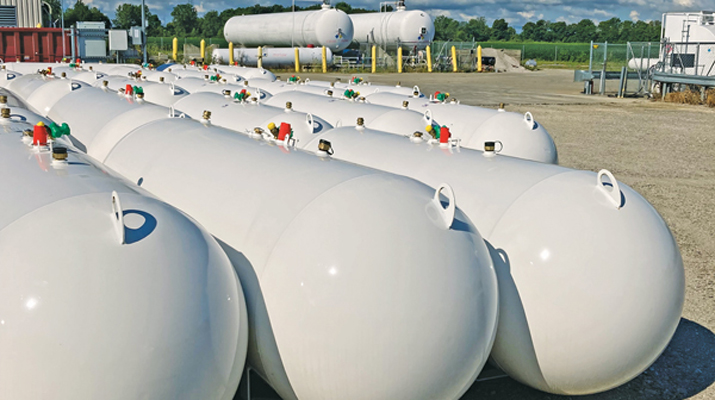Southern Living Idea House fueled by propane
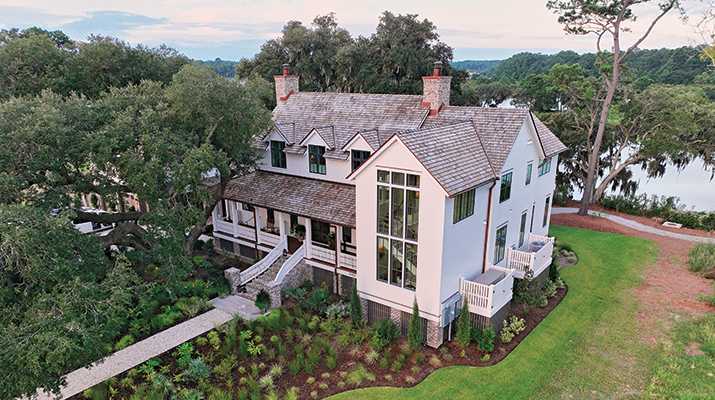
Even from the road, it’s obvious that this house was built with intentionality.
It’s hard to miss the giant live oak tree that spreads its limbs and, unseen, its roots across what proved to be the home’s prime location along South Carolina’s Abbapoola Creek, about 35 minutes south of Charleston. A second live oak, home to an osprey nest, sprawls behind the house, overlooking the marsh and its resident alligators.
Some builders might have dispensed with such obstacles in favor of clear lanes for construction vehicles and a standard house plan. It certainly would have saved time and money.
But this is no ordinary house.
Instead, the 4,400-sq.-ft. home on 0.6 acres in the Kiawah River community on Johns Island was designed specifically to exist in harmony with nature. Builders worked gently around the trees, even creating a slightly detached carriage house in place of an adjacent garage so as to not disturb their roots or branches.
“These two trees have been here for hundreds of years,” explains builder Tom Dillard, president of Dillard-Jones and builder of the $5.4 million home, this year’s Southern Living Idea House, sponsored by the Propane Education & Research Council (PERC). “The entire design was based around these trees.”
Dillard’s commitment to working in harmony with nature made this project a perfect partnership for the propane industry. From the heat pump to the water and pool heaters, to the cooking and laundry appliances and even the gas lamps framing the home’s front door, propane was the key to building a safe, healthy, green home.
“This home today is 13 percent lower in greenhouse gas emissions than it would be if it were all electric,” notes Tucker Perkins, PERC’s president and CEO.
Today, more than 13 million U.S. homes depend on propane, Perkins says. And that number is increasing as customers put an increasingly higher premium on going green, and they’re discovering that propane burns cleanly while giving them the flexibility to live off the grid.
“In the past, everyone [went] to the budget first” as they planned their home, says Matt Blashaw, owner of Kansas City, Missouri-based Blashaw Residential. “Now you start hearing about carbon footprint. What can I do to be a little bit greener? That kind of mentality is starting to come in. What’s a green way to build?”
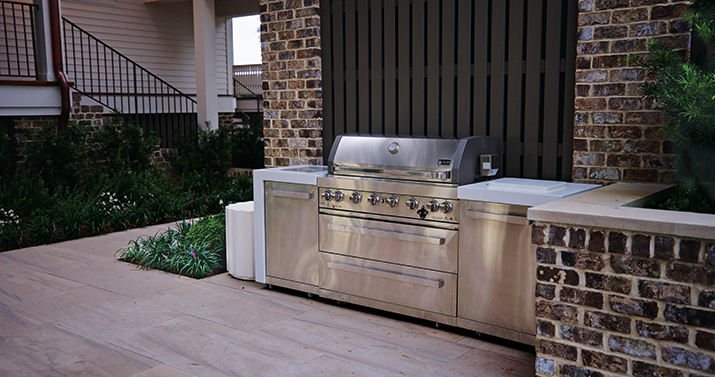
Safe, warm, comfortable
The five-bedroom, seven-bath farmhouse framed by the majestic live oaks was built in just 11 months, but the home’s Lowcountry charm gives the impression that its roots are as old as the trees.
Soft light glows from a pair of propane-fueled copper gas fixtures that illuminate the front door and the expansive porch. Once inside, sisal rugs, conversational groupings of furniture and soft hues of sage and sand complement views of the water and marsh via massive windows throughout the home.
A propane-fueled gas fireplace warms the body and soul, as tree branches sway in mid-September’s “tropical disturbance” breezes. But fear not: The inviting pool just out back can feel like bathwater thanks to a propane-powered pool heater. Five hot water heaters serve the property: two for the house, one for the room over the garage and two Heat Pump Helpers. A propane standby generator is ready to provide backup power in the event the electricity goes out.
“Whatever nature throws at you, you can live in this home and be safe,” Perkins says.
Dillard especially appreciates the propane hydronic heat pump solution that circulates hot water through a hydronic coil, delivering a more comfortable and reliable warmth at a lower cost than all-electric systems.
“Anything below 38 degrees can be problematic [for a heat pump],” Dillard says. “As a mechanical engineer, I was really intrigued by it and think it’s a great idea. It opens up a lot of options for us in other markets.”
It’s all fueled by an underground 1,000-gallon tank that is checked by the local retailer every few weeks, meaning the homeowner can entertain and enjoy the gracious home without worry.
“You couldn’t tell that this house is on propane because you don’t see it,” Dillard says.
Relationships matter
The home’s main structure incorporates three dormers and porches that, from the road, are barely visible behind the front tree. A separate carriage house with garage spaces and the upstairs guest suite is connected to the main house by a short, covered walkway, giving the appearance of a home that has been added onto. Practically speaking, the design tweak afforded builders the ability to carefully sidestep the live oak’s roots.
“Everything had to be in harmony with nature,” Dillard says. “Nature was here first; our job was to not impact that in any negative way.”
That philosophy extended to the builder’s energy choices, not only for this home but for all of Dillard’s projects.
“Using clean fuels for things that make sense for the environment is super important to us,” he explains.
According to Dillard and Blashaw, spurred partly by the COVID-19 pandemic, some 70 to 75 percent of customers today are discovering that they don’t have to live in a city to work efficiently, and are choosing to build in more serene, rural areas off the natural gas lines.
“You’ve got people who want to get out, want a bigger home, then they’re paying astronomical prices for lots because there’s not much available [on the gas mains],” Blashaw explains. “By having that energy independence, you’re able to build in places you couldn’t before because you had to bring in natural gas or other energy forms.”
That’s where builders who are familiar with clean-burning propane appliances and generators – and who have a comfortable working relationship with local retailers – can be essential to educating customers about the advantages of propane, Perkins notes. Since the residential market accounts for about half the propane used in the United States, he says, he strongly encourages retailers to develop contacts with local builders in a position to influence decision-makers.
“Those energy providers are there; they’ve been doing it for years,” Blashaw says he tells customers. “They know your needs before you do.”
Perkins says the partnerships with the Southern Living Idea House and the home’s builders have helped him appreciate the role that propane retailers can play in growing the residential market. The builders he met said they recognized the retailers’ high level of service but noted that perhaps they weren’t as good at telling their story in the community.
“It just emphasizes what we’ve always thought – that propane marketers [who are] looking for places to grow – it’s right in your community, just by strengthening relationships,” Perkins says.
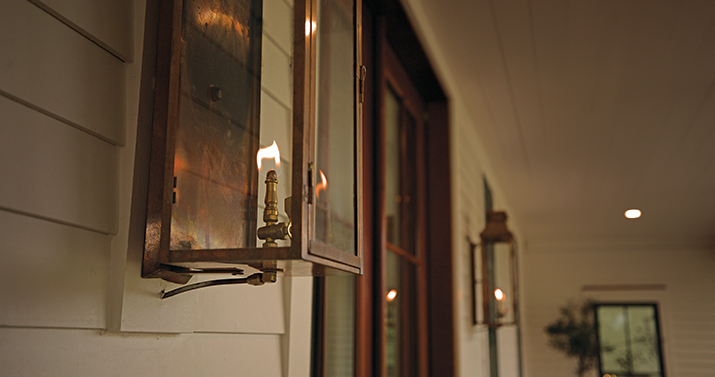
‘A way of life’
Building in rural parts of Kansas has taught Blashaw the importance of propane for customers living off the natural gas mains. Price spikes in electricity are spurring customers to inquire about alternatives, he says.
“Propane’s not just an energy; it’s a way of life,” he says. “The more that I learn about propane, I’m excited about renewable energy coming on board. I think it’s a great, exciting time to not only be energy efficient but, in a world that needs help environmentally, it’s a great thing to be involved in.”
Dillard says he chose propane for his own home when he built his farm.
“We put in three propane tanks, all linked together,” he says. “We had natural gas available, but we chose propane to put in there, and solar power as well. So, if we wanted to take ourselves off the grid for a while, we could.”
The Southern Living Idea House is available for tours through Dec. 22, with proceeds from each $25 ticket benefiting Communities in Schools of South Carolina, Sea Island Habitat for Humanity and the Emanuel Nine Memorial Foundation.
Perkins and the builders hope that each person who walks through the home or takes a virtual tour will appreciate how well propane complements the home’s green design and can help homeowners accomplish their goals.
“This house is really a trophy for how propane is used,” Blashaw says. “I’ve never seen a house using this much propane in my life. It’s beautiful to see how that power of propane comes together.”
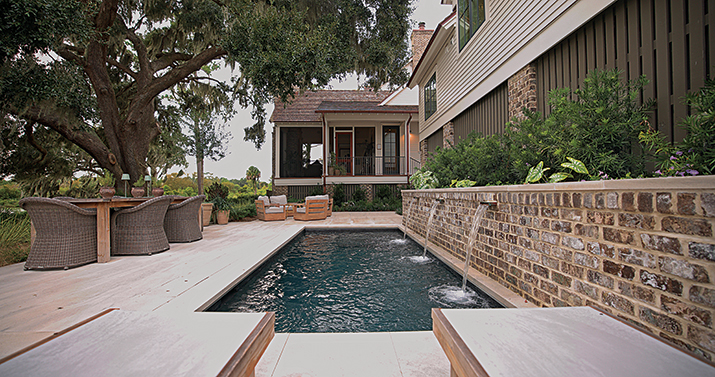
Fueled by propane
Propane is flowing throughout the Southern Living Idea House from a 1,000-gallon underground tank. Here’s what the propane is fueling:
- Cooking appliances – range in kitchen and outdoor kitchen with gas grill
- Fireplace – indoor and outdoor
- Hydronic heat pumps
- Exterior gas lamps
- Pool heater
- Standby generator
- Water heaters








